News (2023)
Congratulations to Matti Dorsch
21. December, 2023
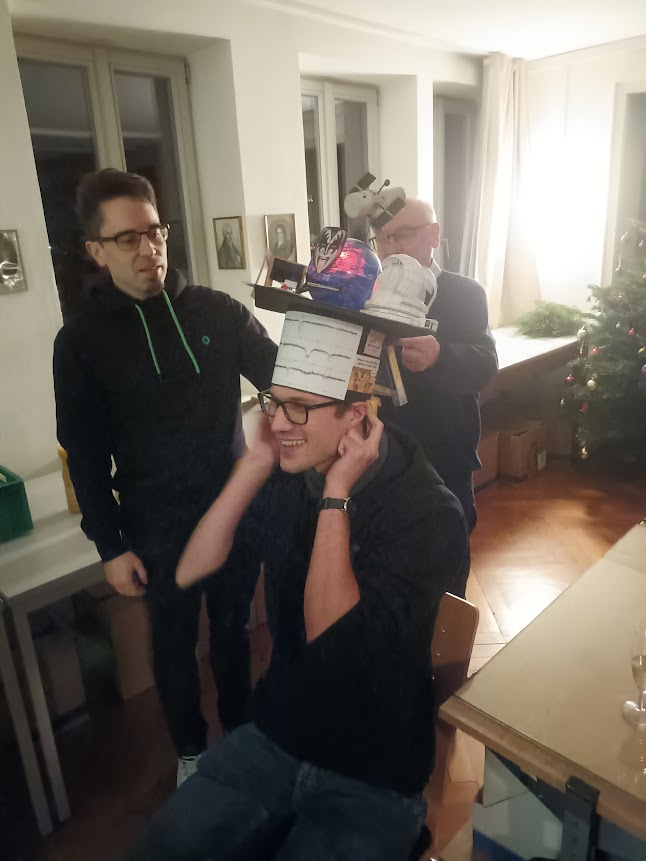
Just before Christmas Matti Dorsch successfully defended his PhD thesis at the University of Erlangen-Nuremberg. We wish him all the best for the future and are very happy that he stays with us in Potsdam.
Congratulations to Ramazan Islami
December, 2023
In December 2023 Ramazan Islami successfully defended his master thesis (Hunting hot white dwarfs). We wish him all the best for the future.
Cycle of lectures on perceptions of the Universe
October, 2023 - February, 2024
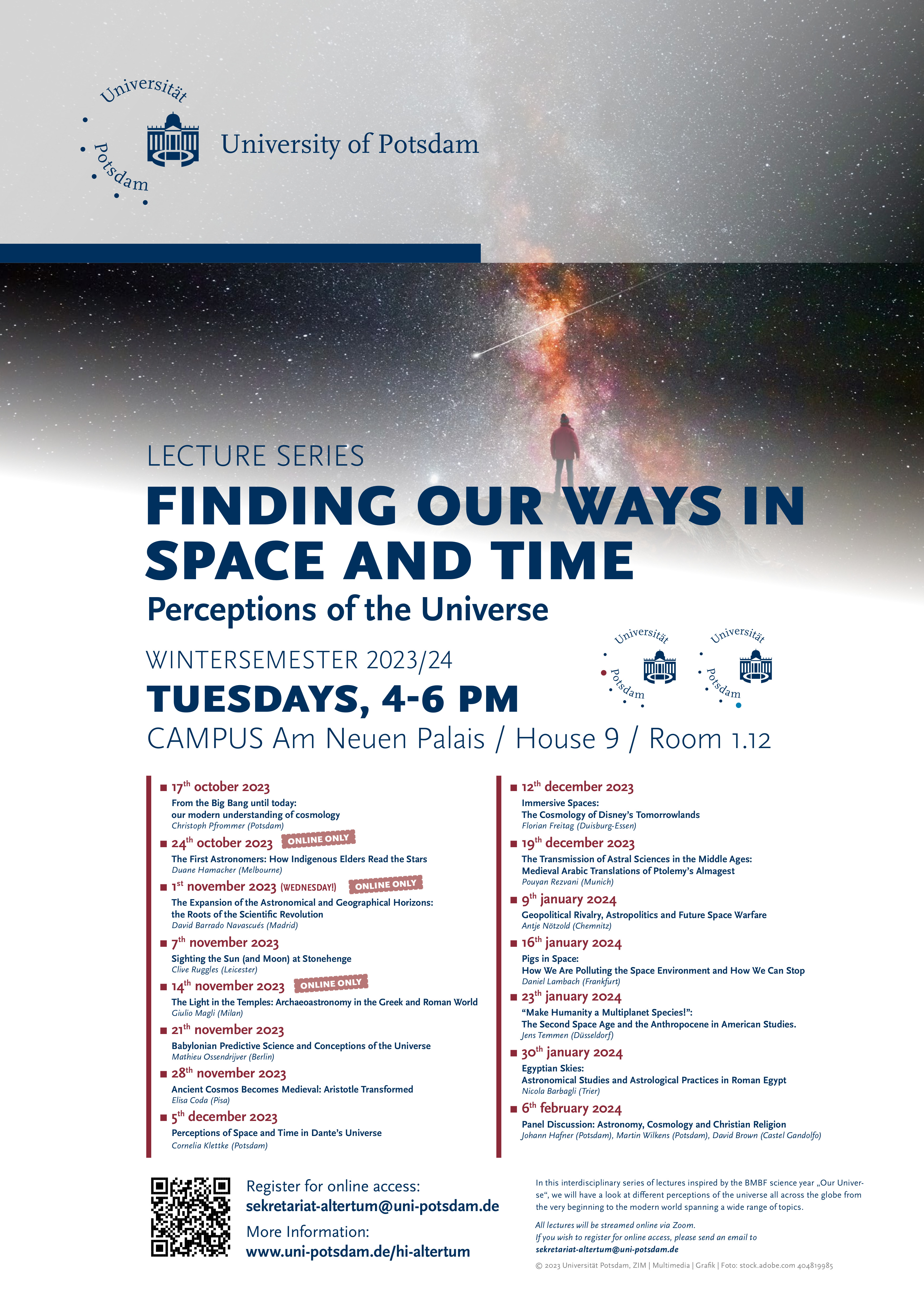
Together with our colleagues Filippo Carla-Uhink and Dominik Geppert from the history department we organise an interdisciplinary cycle of lectures with invited speakers on perceptions of the Universe.
Congratulations to Oliver Steppohn
September, 2023
In September 2023 Oliver Steppohn successfully handed in his bachelor thesis (Blue Horizontal Branch Stars: identification and kinematics). We wish him all the best and a good star in the master astrophysics program.
New hot white dwarfs discovered
September, 2023
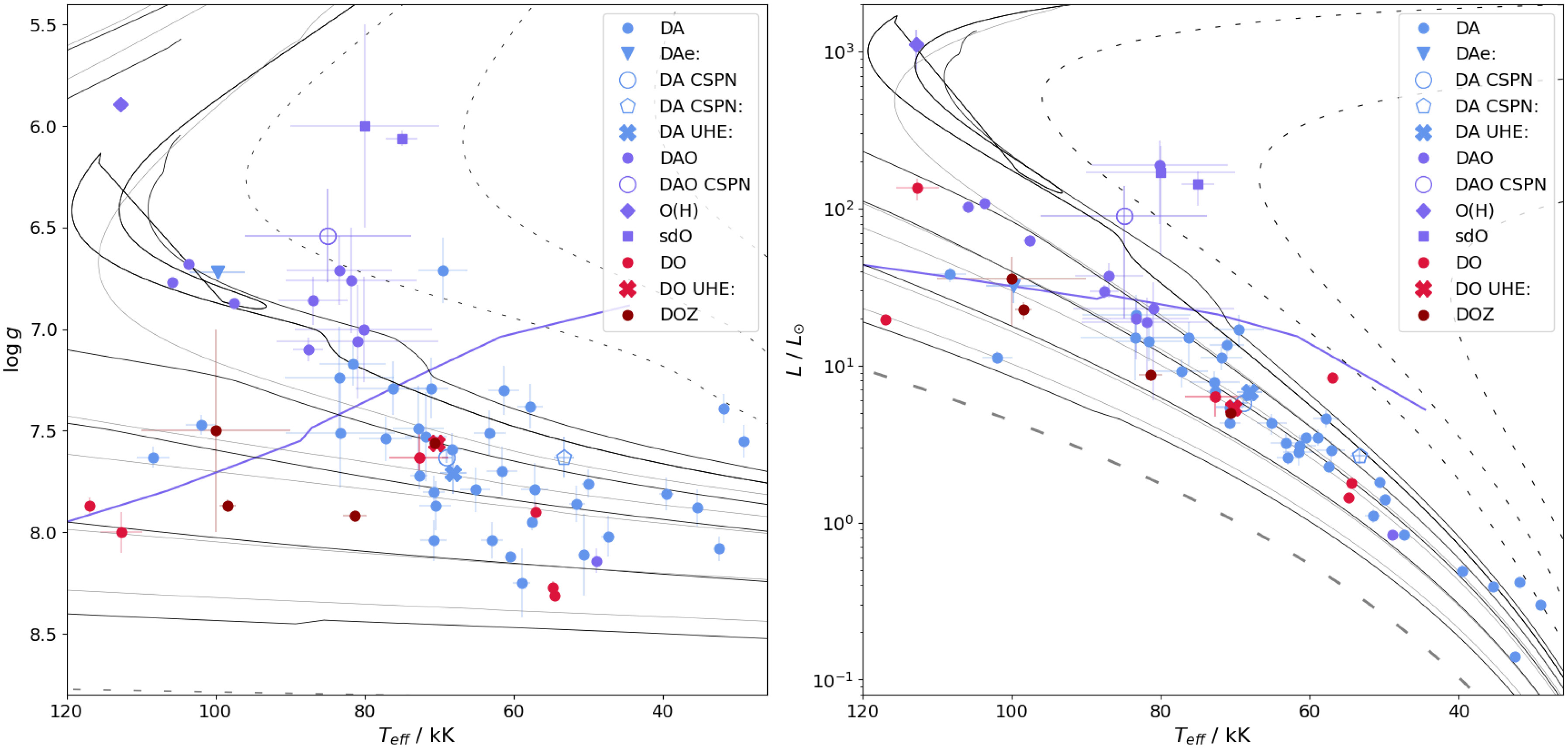
Locations of our targets in the Kiel diagram (left) and HRD (right) superimposed by evolutionary tracks. Image credit: A&A.
In this paper we report on the spectroscopic confirmation of 68 new bright and blue (pre-)white dwarfs (WDs) of diverse types. This finding doubled the number of the hottest known bright WDs. We derived the atmospheric parameters of these stars. By fitting their spectral energy distributions and comparison with evolutionary tracks we derived their radii, luminosities, and masses. Furthermore, we carried out a search for photometric variability, finding that 26% of our targets are variable. Strikingly, the majority of the variable stars exhibit non-sinusoidal light-curve shapes, which are unlikely explained in terms of close binary systems. We propose that a significant fraction of all WDs develop spots when entering the WD cooling phase and suggest that this could be related to the on-set of weak magnetic fields and possibly diffusion. This paper was led by Nicole Reindl and raised some attention in a German popular science magazine.
The first one of its kind
September, 2023
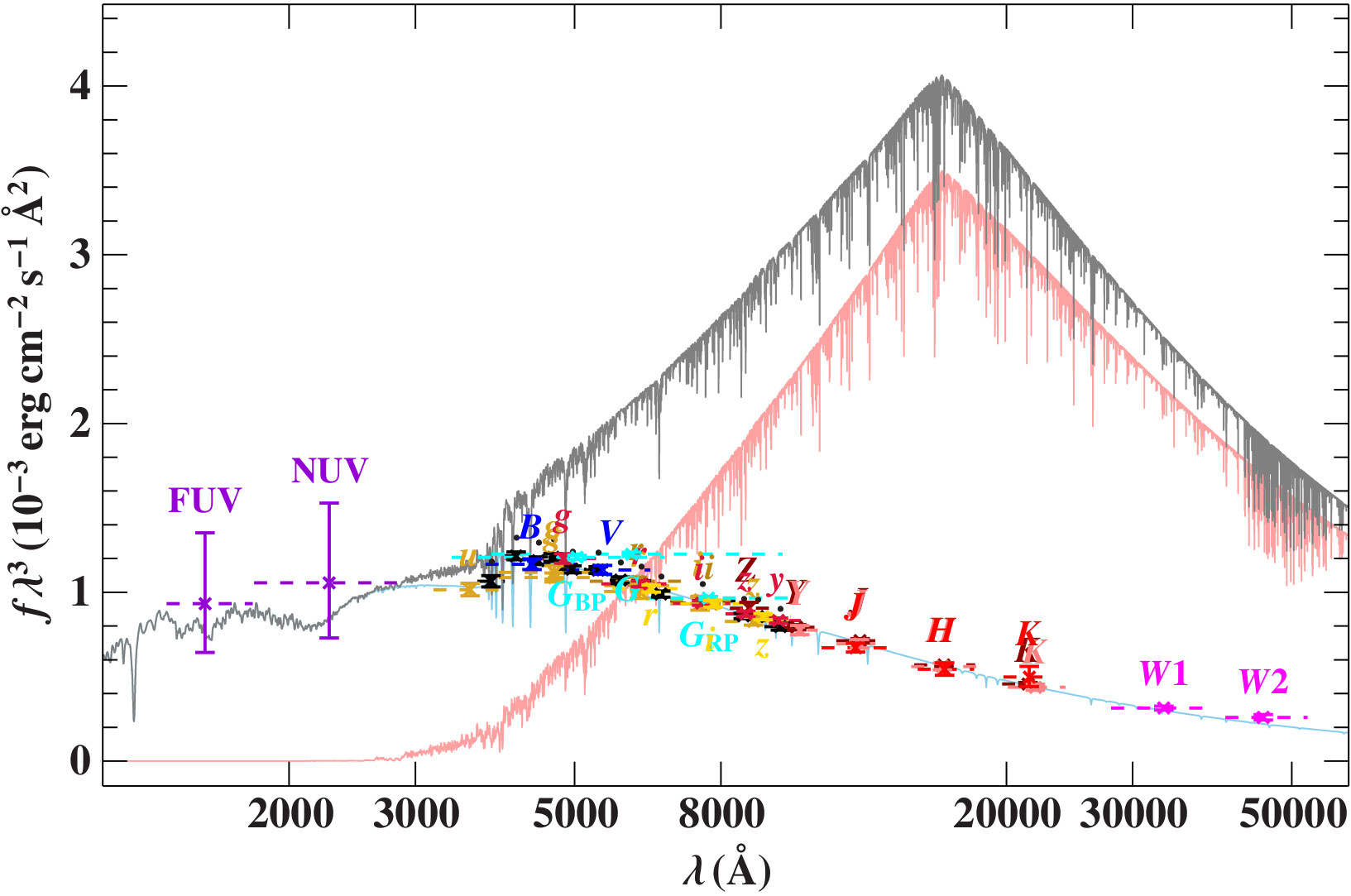
Spectral energy distribution of the newly discovered binary. To illustrate the contribution of a G-type main sequence star to the SED a model (light red) has been added to the best-fit model of the sdB (light blue). The resulting composite model is shown in grey and it can be clearly seen that no such companion is around. Image credit: A&A.
We discovered the first hot subdwarf B (sdB) star with a massive compact companion in a wide binary system of about 900 days period based on an astrometric binary solution provided by the Gaia mission Data Release 3 and performed detailed analyses of the spectral energy distribution (SED) as well as spectroscopic follow-up observations to confirm the nature of the visible component as an sdB star. The companion is invisible despite of its high mass of about one and a half solar masses. A main sequence star of this mass would significantly contribute to the SED and can be excluded. The companion must therefore be a compact object, either a massive white dwarf or a neutron star. This binary might also be the prototype for a new progenitor class of supernovae type Ia, which has been predicted by theory. This paper was led by Stephan Geier with significant contributions by other members of our team.
First meeting with colleagues from Tautenburg and Bamberg in Potsdam
29. September, 2023
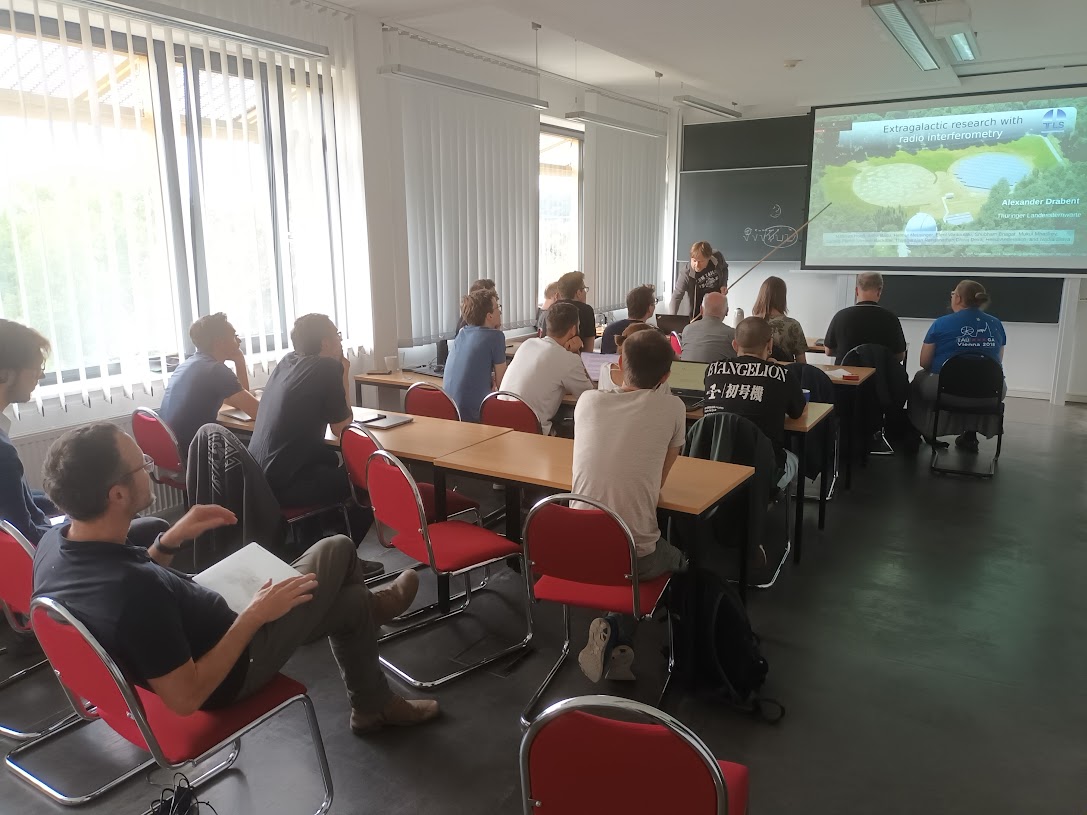
Following up on a tradition started between the institutes in Bamberg and Tautenburg many years ago, we initiated a joined meeting with colleagues from the three institutes to catch up. The meeting was very lively and we hope for more such exchanges in the future.
Hot subdwarf meeting in Armagh and Annual Meeting of the German Astronomical Society in Berlin
September, 2023
From September 11 to 15 we split up and attended both the 11th meeting on hot subdwarfs and related objects in Armagh, UK, and the Annual Meeting of the German Astronomical Society at the same time. It was again a great pleasure to meet our friends and colleagues accompanied by a very rich scientific and social program in Northern Ireland.
Research workshop in Ondrejov
August/September, 2023
Group photograph in front of the 2m Perek telescope
From August 24 to September 1 we had another very successful research workshop together with our friends from Ondrejov. Students from Potsdam and Prague were again trained in photometric and spectroscopic observations, data processing and analysis.
Farewell to Nicole Reindl
August 1, 2023
After four years as guest scientist and independent Open Topic Fellow in our group Nicole started a position as Heisenberg Fellow and staff scientist at the Landessternwarte Heidelberg. We wish her all the best and hope that we can continue to collaborate and meet regularly.
Congratulations to Chinmay Mahajan and Samaneh Zahmatkeshfilabi
July, 2023
In summer 2023 Chinmay Mahajan (Spectroscopic Analyses of Eclipsing Hot Subdwarf Binaries) and Samaneh Zahmatkeshfilabi (Analysis of Eclipsing sdB binaries from the EREBOS Project) successfully defended their master theses. We wish them all the best.
Analysing variations of hot subdwarf binaries seen in light curves taken from space
May, 2023
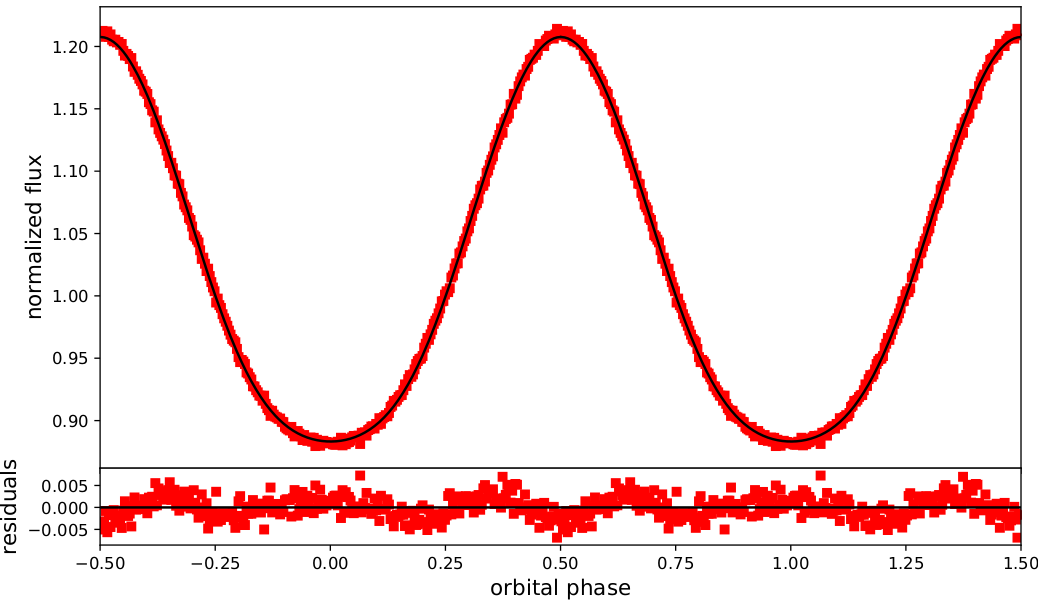
Phased TESS light curve of the reflection effect binary TYC5977-517-1 (given by the red squares) together with the best-fit model given by the black line. Lower panel shows the residuals. Image credit: A&A.
Hot subdwarfs in close binaries with either M dwarf, brown dwarf, or white dwarf companions show unique light variations. In hot subdwarf binaries with M dwarf or brown dwarf companions, we can observe the so-called reflection effect, while in hot subdwarfs with close white dwarf companions, we find ellipsoidal modulation and/or Doppler beaming. The high signal-to-noise space-based light curves from the TESS and K2 missions allowed us to analyze a large sample of sdB binaries with M dwarf or white dwarf companions. For the first time, we can constrain the absolute parameters of 19 companions of reflection effect systems with companion masses from the hydrogen-burning limit to early M dwarfs. Moreover, we were able to determine the mass of eight white dwarf companions in hot subdwarf binaries showing ellipsoidal modulations. The derived masses of the white dwarf companions show that all but two of the white dwarf companions are most likely helium-core white dwarfs. Combining our results with previously measured rotation velocities allowed us to derive the rotation period of seven sdBs in short-period binaries. In four of those systems, the rotation period of the sdB agrees with a tidally locked orbit, whereas in the other three systems, the sdB rotates significantly more slowly. This paper was led by Veronika Schaffenroth.
Farewell to Veronika Schaffenroth
April 1, 2023
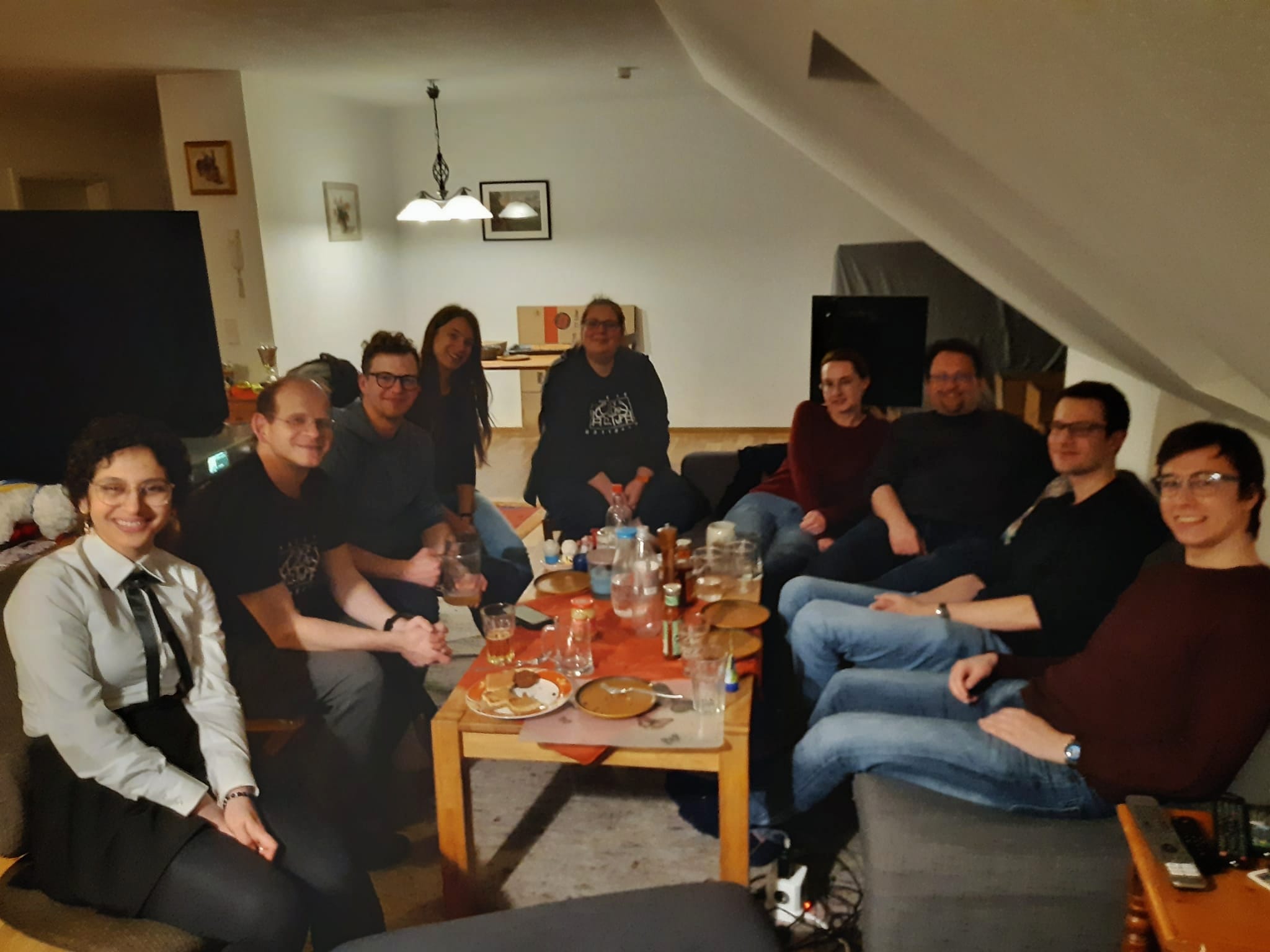
After five very sucessful years Veronika Schaffenroth left our group to start a position as staff scientist at the Thüringer Landessternwarte in Tautenburg. We wish her all the best and hope that we can continue to collaborate on the many topics we were working on.
Welcome to Aakash Bhat
January 1, 2023
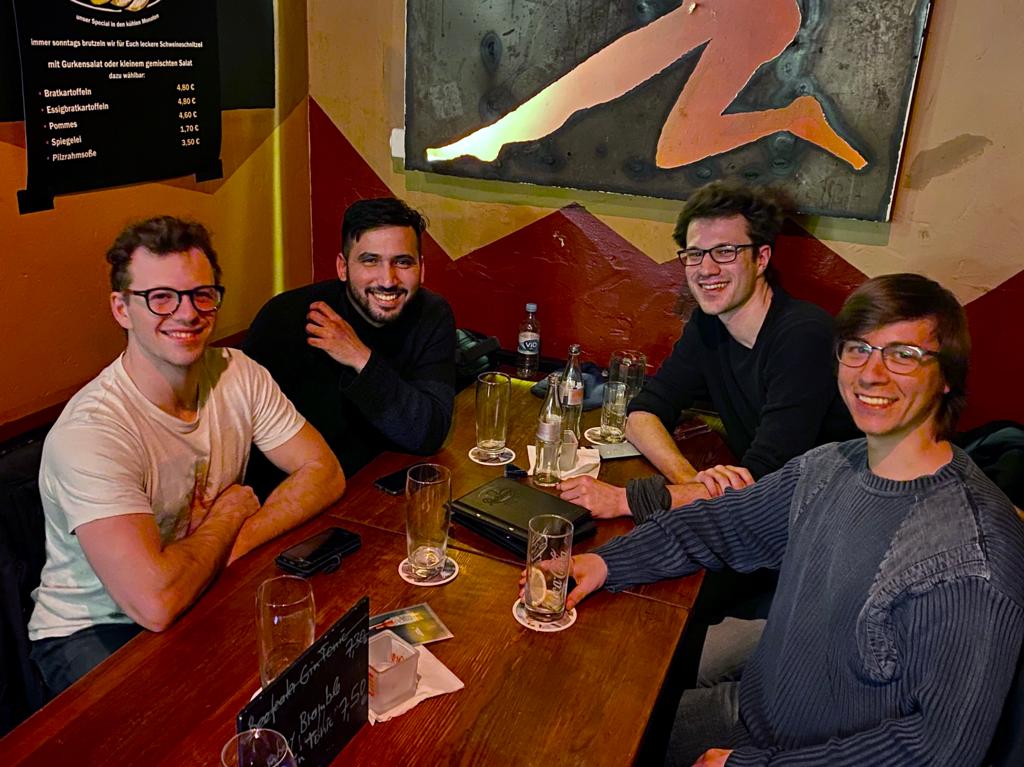
We are very happy to welcome Aakash Bath as a new PhD student in our group. He will be studying diverse types of runaway stars.